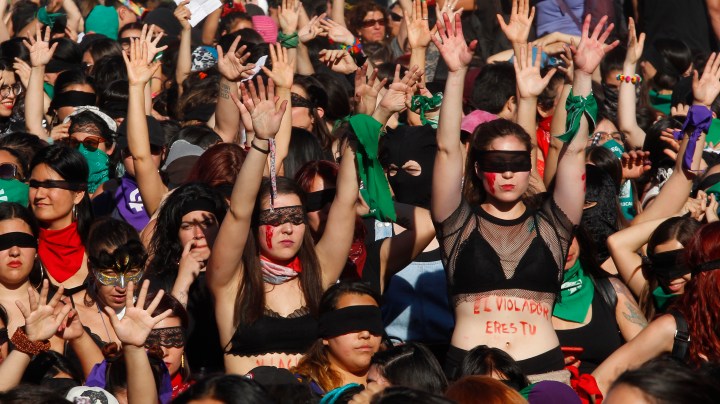Feminist Performances
During the first days of the protest, performance artist Cheril Linett, along with her collective Yeguada Latinoamericana, took the streets with a series of three performances under the title Estado de Rebeldía. In her usual style, Linett situates highly aestheticized bodies in abject situations. On this occasion, a group of young women stride the streets with skirts rolled around their waists shoving mares’ tails in front of armed police, military groups, barricades and government buildings.
Not far away, visual artist Rocío Hormazábal worked against social stereotypes of beauty to cast a light over the systems of oppression. With her collaborator Zaida González, she defied curfew and, under the banner of “Piñera me empelota,” Hormazábal got naked between a barricade and a group of armed police. On November 25, she posed in a bikini in the Plaza de la Dignidad declaring “Por un verano sin Piñera.”
This was not the only feminist performance that has gone viral. Now more famously, the collective Las Tesis, started by Daffne Valdés, Sibila Sotomayor, Paula Cometa and Lea Cáceres, created a massive choreographed declaration about the subjugation of women in patriarchal society called Un Violador en Tu Camino. Since then, the song and dance have been performed by feminist groups protesting violence against women across the world, including Puerto Rico, Peru, Mexico, Colombia, Spain, France, Germany and more. Ironically, the original choir of women who sang and danced the song in Chile were dispersed by the police.

